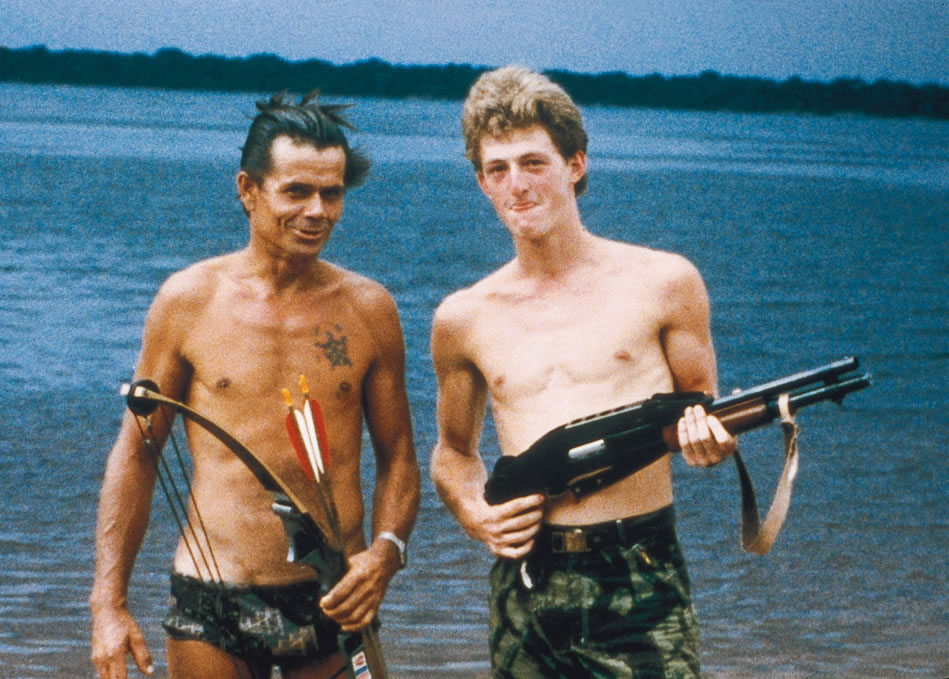Hans Guenther Hauck, aka Tatunca Nara, isn’t the first seemingly unhinged visionary who vanished into a tropical climate and wound upon creating not a Utopia but a body count. (August Engelhardt, for one, did likewise more than a century ago.) The opening of “El Dorado in the Amazon,” Alexander Smoltczyk’s Spiegel account of the man who came to the attention of Jacques Cousteau and Steven Spielberg and the German police:
“In the late 1960s, a man turned up in the Brazilian state of Acre, deep in the Amazon region. He was wearing a loincloth and a feather, carried a bow and claimed he was Tatunca Nara, chief of the Ugha Mongulala. No one had ever heard of an Indian tribe with that name. In addition, the man bore no resemblance whatsoever to an Indian. He was white and spoke with a strong French accent.
He said he had inherited the accent from his mother, explaining that she was a German nun who had been taken by the Indians. His people, he said, lived in an underground city called Akakor, and that German was one of the languages spoken there — a byproduct of the offspring of 2,000 Nazi soldiers who had once traveled up the Amazon in U-boats.
His story would have raised eyebrows anywhere else. But outlandish stories are not uncommon in the Amazon region, so no one paid much attention to Tatunca Nara. Otherwise, he made a friendly impression, and nothing much would have come of his appearance if it hadn’t come to the attention of Karl Brugger, a correspondent with Germany’s ARD television network at the time. He visited Tatunca Nara in Manaus and recorded his story on 12 audiotapes. Brugger called it: ‘The most unusual story I have ever heard.’ It was a tale of extraterrestrial visitors, secret rites of the ‘ancient fathers’ and incursions of the ‘white barbarians,’ all described copiously and in great detail, and without interruption ‘from the year zero to the present.’
Even more surprising was the fact that Brugger’s book, The Chronicle of Akakor, enjoyed a certain level of success. In New Age circles, Tatunca’s stories were studied as if they were the Dead Sea Scrolls. They included lines like, ‘Five empty days at the end of the year are dedicated to worshipping our gods.’
Oceanographer Jacques Cousteau hired Tatunca as a guide when he explored the region with his boat, the Calypso, in 1983. The 2008 adventure film Indiana Jones and the Kingdom of the Crystal Skull is about a sunken city in the Amazon called Akator, and an Indian tribe called the Ugha Mogulala. The action figure for the film is dressed in a loincloth and a feather.
Does the original exist? Is Tatunca alive? This reporter recently traveled to Brazil in an effort to find the legendary man.”
Tags: Alexander Smoltczyk, Hans Guenther Hauck, Karl Brugger, Tatunca Nara

